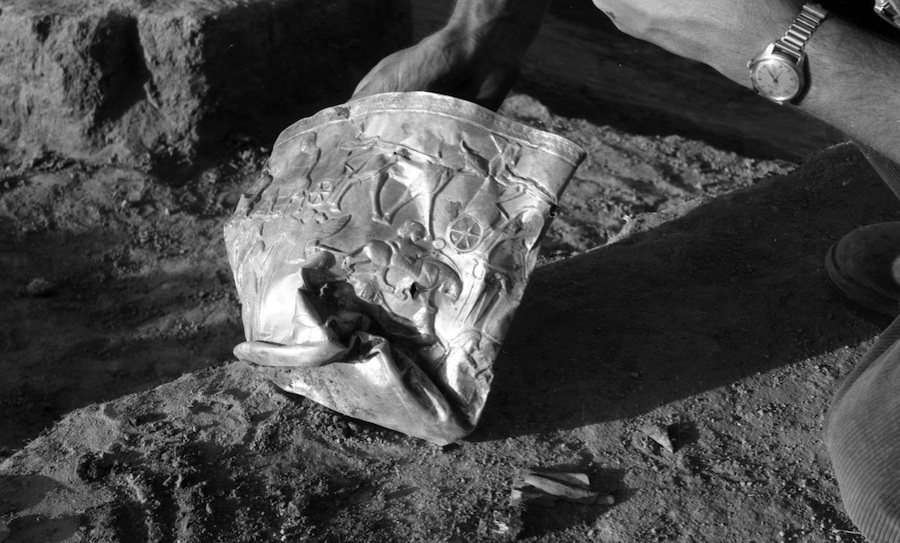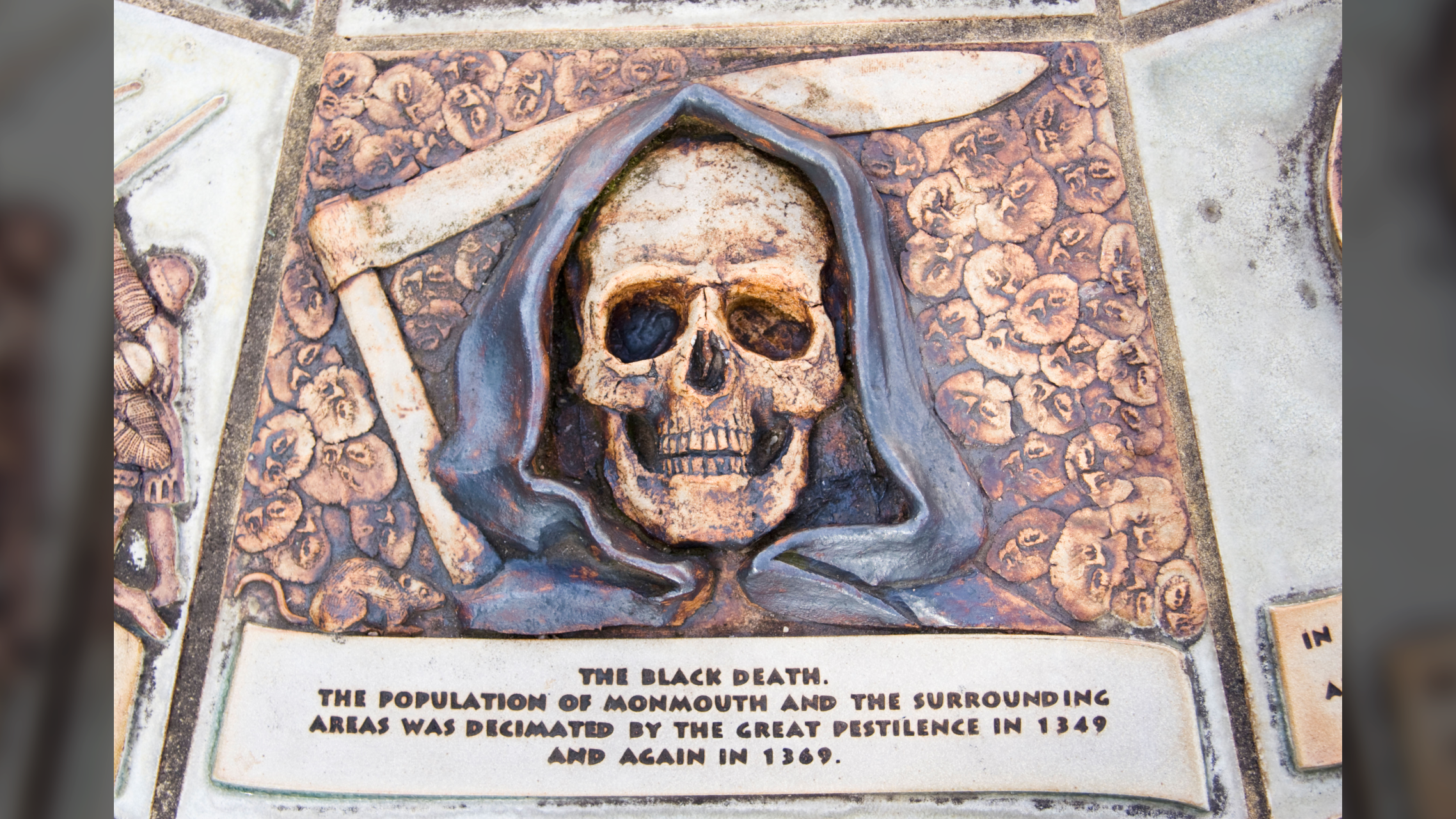3,000-Year-Old Golden Bowl Hides a Grisly Archaeological Tale

In 1958, archaeologists were digging through the ruins of a burned Iron Age citadel called Hasanlu in northwestern Iran when they pulled a spectacular, albeit crushed, golden bowl from the layers of destruction.
The 3,000-year-old bowl became an object of fascination once word got to the press. The next year, it graced the pages of Life magazine in a full-color spread alongside an article about the discoveries at Hasanlu.
But the story behind the prized find is less glossy. The bowl was uncovered just beyond the fingertips of a dead soldier and two of his comrades, who were crushed under bricks and burned building material around 800 B.C. Scholars have debated whether these three men were defenders of the citadel or enemy invaders running off with looted treasures. A new interpretation suggests the soldiers were no heroes.
Hasanlu is sometimes described as the Pompeii of the ancient Near East, because of its so-called "burn layer," which contains more than 200 bodies preserved in ash and rubble, explained Michael Danti, an archaeologist at Boston University. The archaeological evidence provides a rather disturbing snapshot of the closing hours of the siege of the citadel. [Preserved Pompeii: See Images of a City in Ash]
Located on the shores of Lake Urmia, Hasanlu seems to have been first occupied about 8,000 years ago. But by the ninth or 10th century B.C., there was a bustling, fortified town at the site.
Within the town's walls were houses, treasuries, horse stables, military arsenals and temples, many of which had towers or multiple stories. The mudbrick architecture likely resembled the adobe buildings of the American Southwest, but many roofs, floors and structural supports at Hasanlu consisted of timber and reed matting — all of which would have been tinder in a blaze, Danti said.
Other central details about life at Hasanlu are less clear. Archaeologists don't know the ethnicity of the people who lived there or what language they spoke.
Get the world’s most fascinating discoveries delivered straight to your inbox.
"Despite the really rich material record, they didn't really find any indigenous writing at all," Danti said.
The burn layer at Hasanlu suggests a surprise attack destroyed the citadel. Archaeologists who excavated the site in the 1950s, '60s and '70s found corpses that were beheaded and others that were missing hands. Danti said he has seen a fairly clear example of a person who was cut in half. [8 Other Grisly Archaeological Discoveries]
"The students that were working there would have nightmares at night, because they were spending hours and hours out there excavating murder victims," Danti told Live Science. Many of the victims were women and children. And in mass graves on top of the burned layer, excavators found the remains of people who tended to be very young or old and seemed to have suffered fatal, blunt-force trauma head wounds. These victims likely survived the initial attack only to be killed when their captors realized they would be of little use as slaves, Danti said.
"This was warfare that was designed to wipe out people's identity and terrify people into submission," Danti said.
Danti, who has been piecing together a history of the site from excavation archives as part of a larger, more daunting project, published a study on Hasanlu in the September 2014 issue of the journal Antiquity. The site was primarily excavated between 1956 and 1977 under the direction of Robert H. Dyson, who led a team from the University of Pennsylvania, the Metropolitan Museum of Art in New York and the Archaeological Service of Iran. Because of security pressures and the overwhelming amount of material found at the site, the pace of their work was often hurried, and their record-keeping methods were not always meticulous. Some artifacts were pulled from the ground before they were documented or photographed in situ. There are no photographs of the gold bowl before it was taken out of the ground, for example.
In revisiting Hasanlu, Danti has taken a closer look at the three warriors. He said it seems likely they were climbing up a wooden staircase inside of a home when the building collapsed. The men fell through what was probably a waste-disposal chute and were buried by debris. Besides the gold bowl, there are other treasures scattered around their bodies, including textiles, fancy armored belts, metal vessels and delicately carved cylinder seals.
The outfits and weapons of the warriors look like standardized military equipment, Danti said. The men wore crested helmets with earflaps, and they carried spiked maces. They appear to have been well-prepared for battle.
"I doubt these men were rescuing a valued bowl and many other fine objects with little hope of egress as the citadel burned and its remaining occupants were slaughtered or taken captive," Danti wrote in his conclusion.
Danti's interpretation supports a hypothesis that the warriors hailed from the Urartu kingdom that grew out of an area in modern-day Turkey. Historical texts indicate the ancient Urartu kingdom was expanding into the region around Hasanlu during the Iron Age through a brutal military campaign. Sometime after the citadel was abandoned, an Urartian fortification wall was built on top of the ruins of Hasanlu.
Still, Danti said he hopes other researchers will test his hypothesis and perform bioarchaeological analyses on the skeletons of both the warriors and the slain people who lived at Hasanlu. Diet and drinking water leave telltale biomarkers in a person's skeleton, and a bone analysis could help confirm where the warriors came from, and whether they died trying to protect or steal the town's riches.
Follow Megan Gannon on Twitter and Google+. Follow us @livescience, Facebook & Google+. Original article on Live Science.



